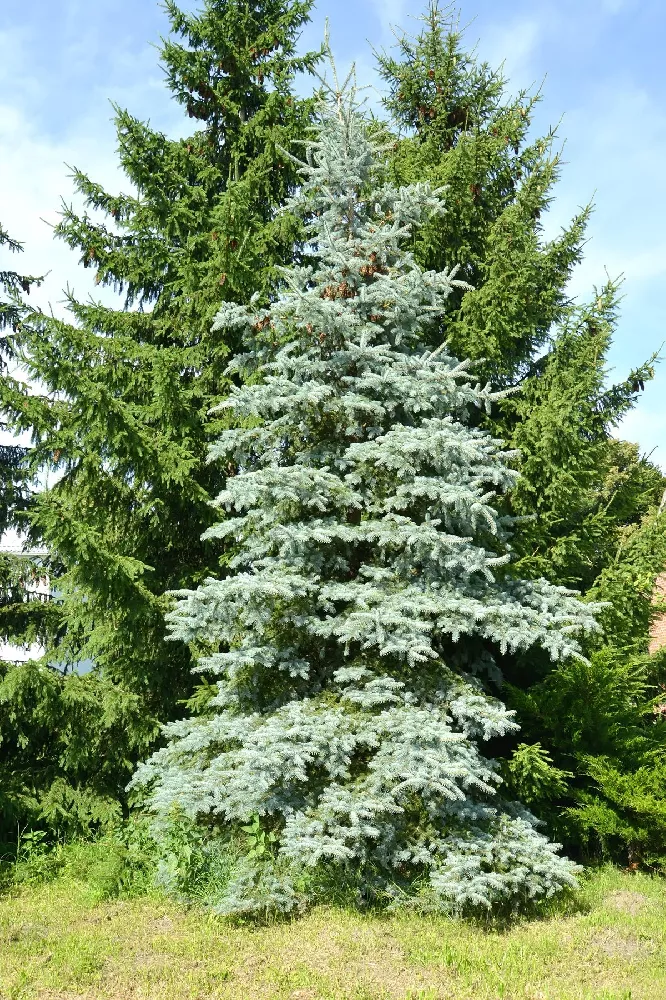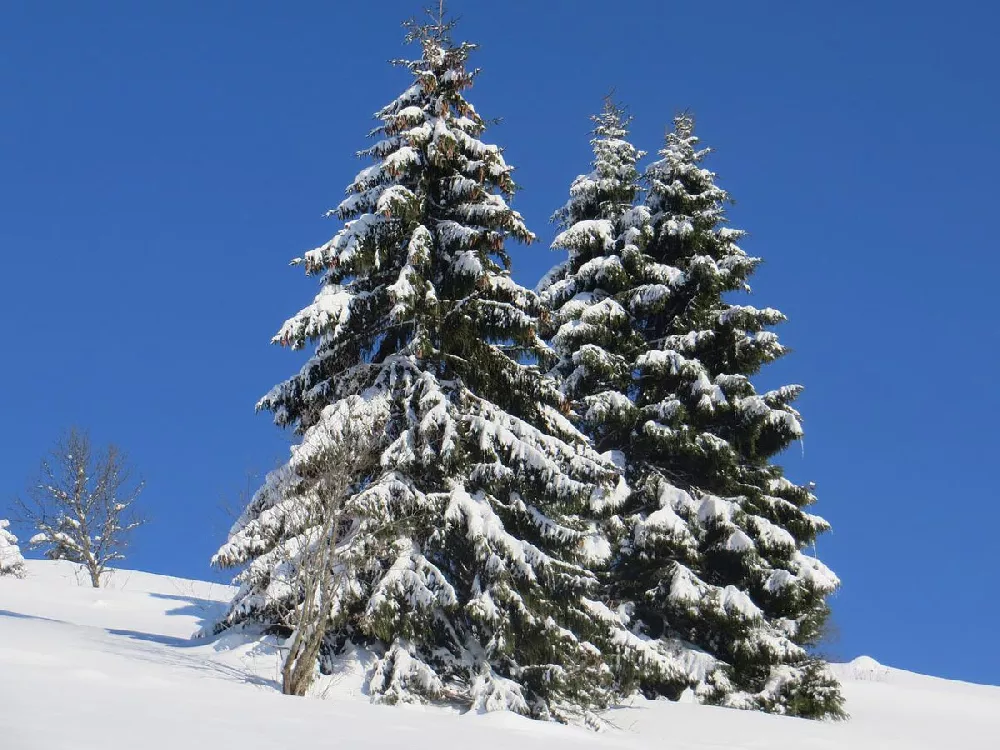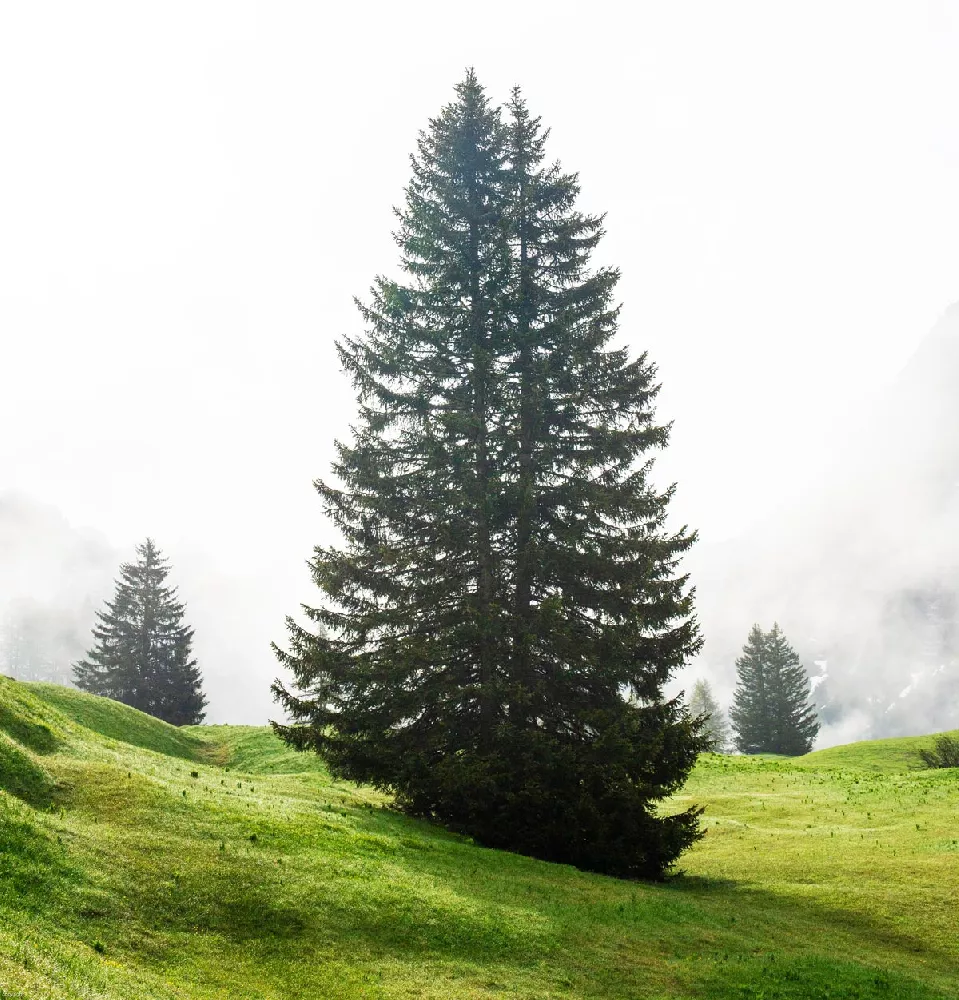- Home >
- Privacy Trees >
- Blue Wonder Spruce Tree
Blue Wonder Spruce Tree for Sale - Buying & Growing Guide
You may think of spruce trees as majestic denizens of the forest — and they are. But when you see a Blue Wonder spruce tree, the first word that may come to your mind is "cute." This diminutive evergreen, Picea glauca 'Blue Wonder,' which maxes out at a height of 5 to 6 feet, was tailor-made to serve as a specimen tree in smaller yards or in a middle background role in larger ones. It has an attractive conical silhouette and striking blue-green foliage that contrasts beautifully with other shrubs and trees. The Blue Wonder spruce tree can be a striking windbreak or privacy screen, and it is flexible enough to be used in formal garden settings as well as cottage gardens. Here are a few more reasons why you need one or more in your garden:
- This spruce is an excellent container plant that is easily grown in ornamental pots.
- They are tough and resilient plants with few natural pests or diseases.
- The Blue Wonder spruce is a great choice for a living Christmas tree when strung with lights or decorations.
Enter your zip code to find nearby stores that may carry this plant.
Plant Care
Sunlight

Star cherry trees do best in full sun — six to eight hours of direct light a day.
Watering
Water newly planted trees every other day; once established, they will need little supplemental watering.
Fertilizing

Fertilize in spring with a balanced, slow-release product designed for landscape trees and shrubs.
Planting and Care
Planting instructions
Choose a site for your Blue Wonder spruce tree that gets at least four hours of sunlight a day, with soil that drains well. Unpot your sapling, teasing out any encircling roots, which will eventually girdle the tree and can kill it. Dig a hole that’s as deep as the root ball and twice as wide. Place the tree in the hole, and, while holding it upright and steady, fill in around it with good-quality topsoil, tamping down as you go to eliminate air pockets. Water thoroughly. Apply a 2- to 3-inch layer of an organic mulch, such as bark chips, to conserve moisture and hinder weed growth.
Watering and nutrients
For roughly the first month after planting, water your Blue Wonder spruce every other day. When you start to see new growth on the tree, cut back to once-a-week watering unless your weather is very hot and dry, in which case you may need to water it twice a week. By its second year, your tree should be established, and thus will not need supplemental watering. Your tree doesn’t need fertilizing if it’s planted in fertile soil, but if you wish, you can give it a balanced, slow-release fertilizer in spring, such as a 10-10-10 formula.
Pollination
Spruce trees carry both male and female cones — which they have instead of flowers. Male cones emit pollen, which travels on the breeze to the female cones, eventually yielding seeds. These seeds will drop to the ground, where they are dispersed by the small animals that use them as a food source.
Pruning
Your Blue Wonder spruce tree doesn’t need regular pruning. It should achieve a naturally pleasing conical shape on its own. You should cut out any broken, diseased or damaged limbs when you see them, but other than that, you shouldn’t need to do any significant pruning.
Pests and diseases
Keeping your tree healthy is the best way to help it resist insect pressure or disease. Common insects that may be attracted to your tree include bagworms and gypsy moths. A healthy Blue Wonder spruce tree should be able to fend off all but the most severe infestations. The most common disease of spruce trees is needle cast disease, a fungal illness that causes foliage to die and drop off. A fungicide may help, unless the disease is too far advanced.
Achieving maximum results
Unlike most spruce trees, the Blue Wonder spruce is an excellent container plant. Choose a pot for your plant that is about twice the size of the root ball, with good drainage in the bottom. Plant the tree in good-quality potting soil, and place it in a sunny spot. The key factor with container-grown plants is to remember that they may need more supplemental water and feeding than plants grown in the ground. To know if your container-grown spruce needs water, take a look at the soil 2 inches below the surface. If it’s dry, give the tree a good drink. Regular fertilizing with a balanced product designed for landscape trees and shrubs throughout the growing season is also recommended.
FAQs
How is a Blue Wonder spruce tree best used in my landscape?
The Blue Wonder spruce tree's symmetrical shape makes it a great choice for a formal garden. Consider two container-grown trees flanking your front doorway or the entrance to your patio or garden, for example. This tree’s petite size makes it a good background choice in smaller gardens, providing texture and color against which floral plantings will shine. It also works beautifully in rock gardens or Asian-inspired gardens.
Where can the Blue Wonder spruce tree be grown outside?
The Blue Wonder spruce tree is able to grow in USDA hardiness zones 3 through 8. That means it is hardy in almost all of the contiguous U.S., excepting the very far South, and it's also able to be grown throughout much of Canada. This sturdy little tree is hardy down to -30 degrees Fahrenheit.
Can I use a Blue Wonder spruce as a Christmas tree?
Sure! Its classic conical shape makes it a perfect Christmas tree. A container-grown tree can be brought inside and decorated for the holidays with no difficulties. If your tree is growing in your garden, why not leave it where it is and decorate it with garlands of popcorn and other edibles for the birds?
Compare Similar Products
You can't add more Product Name - Product size to the cart.
OK






